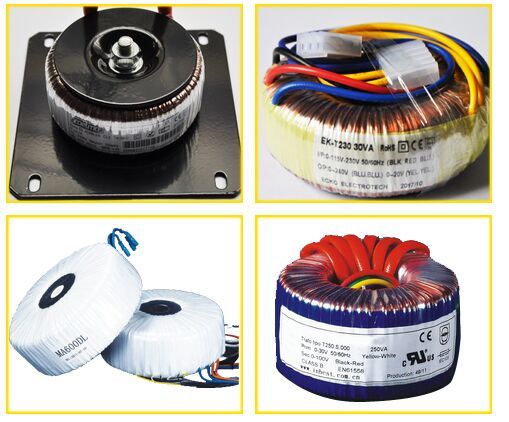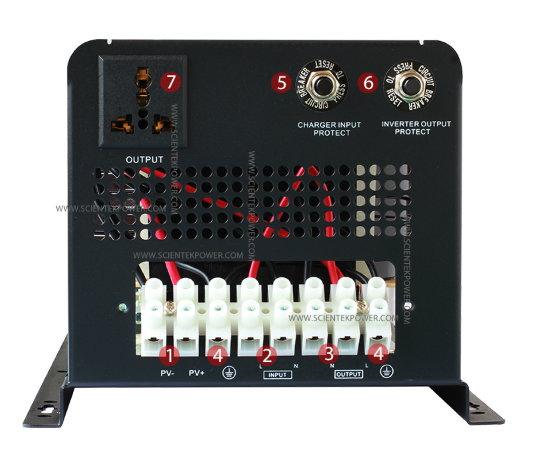The inverter efficiency is an important parameter to measure the performance of the inverter. The inverter efficiency value is used to characterize its own power loss, usually expressed in %. The inverter efficiency in the inverter is directly related to the system efficiency.
If the inverter efficiency is too low, it will seriously cause the system efficiency to drop. In the solar photovoltaic power generation system, the conversion efficiency of the solar cell array generally does not exceed 18% at present, and the cost of the solar cell is relatively high. It is very difficult to increase conversion efficiency by 2% to 3%, but it is very difficult to improve the inverter efficiency 3% to 5% is completely possible. The efficiency of the inverter is an important criterion for the performance of the inverter, and it has an important impact on the increase of power generation and the reduction of power generation costs in the photovoltaic power generation system.
The rated output capacity is most used to characterize the ability of the inverter to supply power to the negative stage. The higher the rated output capacity, the stronger the load capacity of the inverter. The rated output capacity value is only a reference for pure resistive load. If the load carried by the inverter is not purely limited, the load capacity of the inverter will be less than the given rated output capacity value.

Output voltage stability refers to the stability of the inverter's output voltage. In the inverter, the deviation of the output voltage of the inverter within the allowable fluctuation range of the input DC voltage (usually called the voltage regulation rate) is generally given, and the high-performance inverter generally also gives the load reason. When 0% changes to 100%, the voltage deviation of the inverter output voltage (usually called load regulation).
The nominal voltage usually refers to the open-circuit output voltage, that is, the voltage value at which no load is connected and no current is detected(Power Inverters For Home Use). In an independent solar photovoltaic system, the battery terminal voltage fluctuates greatly during charging and discharging, and the voltage fluctuation of the lead-acid battery can reach about 30% of the nominal voltage. Therefore, the inverter must have good output voltage stability to ensure that the system is relatively stable. Work within a large DC input range.
In the operation of the solar photovoltaic power generation system, the reliability of the inverter is one of the main factors of the reliability of the vibration system. Because photovoltaic power generation systems generally work in relatively remote and difficult places and are inconvenient to maintain, the inverter must be bookable.
Its bookability requires the inverter to have good protection functions, including over-current protection and short-circuit protection in the inverter. During the normal operation of the photovoltaic power generation system, due to load failure, human misoperation, and external interference, it is very likely that the power supply system will have excessive current or short circuits. To improve reliability, the inverter must be required. Related protection functions.

Start-up performance refers to the ability of the inverter to start with load and the performance of dynamic work. The inverter should be able to ensure its normal start under the rated negative stage. When the general resistive load is working, the inverter has a better starting performance.
But if it is an inductive load, such as a motor, refrigerator, air conditioner, or high-power water pump, the power may be several times more than the rated power. Usually, when the inductive load starts, the inverter will withstand larger surge power. Therefore, the starting performance of the inverter requires that when inductive or other loads are started, the internal components of the inverter can withstand multiple full-load starts without causing damage to the power devices.
When the inverter output voltage waveform is a sine wave or a correction wave, in addition to the fundamental wave, it also contains harmonic components(home backup power inverter). The proportion of the harmonic components in the total output voltage waveform is usually called the harmonic distortion. High-order harmonic currents will generate eddy currents in the inductive load, causing the device to blow and heat, and severely damage electrical equipment.
Generally, the inverter will indicate its harmonic distortion. The harmonic distortion of the square wave inverter is about 40%, which is generally only suitable for pure resistive loads; the harmonic distortion of the modified wave inverter is less than about 20%, which is suitable for most loads; and the sine wave inverter The harmonic distortion is small and can be applied to all AC power loads.